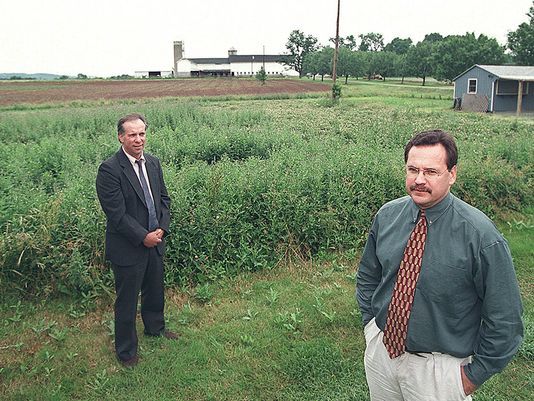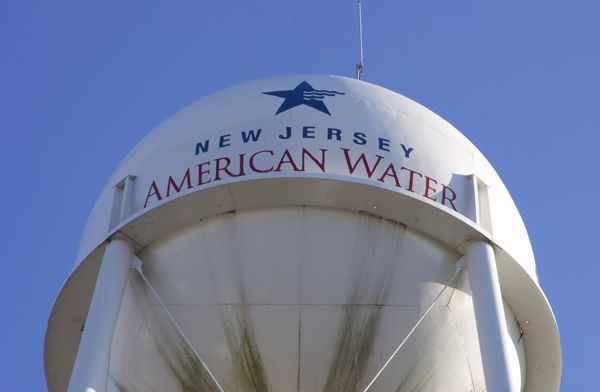US Army Corps of Engineers Proposes Draft Dredging Permit for Controversial BL England Plant
Public Comment Period Closes Tomorrow
Many thanks to Fred Akers for the heads up on this and my bad for not getting word out and preparing comments.
For those interested, here is the Army Corps public notice.
Here is my letter requesting a 60 day extension of the public comment period and a public hearing.
It might be interesting to see how the Corps responds to the issues I raise about compliance with the Obama Executive Order on climate change adaptation.
[*Apologies for failure to mention that Sierra Club (& I think Delaware Riverkeeper) have filed a lawsuit on DEP’s Clean Water Act Section 305(b)permit for failure to require installation of cooling towers.]
January 13, 2015
Dear Mr. Deems:
Please accept my comments below on USACE public notice CNAP-OP-R-2014-1110-83 for a draft 404 permit for the B.L. England power plant in Beesley’s Point NJ, see:
http://www.nap.usace.army.mil/Missions/Regulatory/PublicNotices.aspx
I request that the USACE hold a public hearing on this draft permit and extend the comment period by 60 days.
A public hearing and comment period extension are warranted for the following reasons:
1) There is enormous local, regional, statewide, and national public interest in the operation of this plant and its adverse impacts on natural resources, the Great Egg ecosystem, local air quality, climate change, and the nearby Pinelands National Reserve. Thousands of people have participated directly in the debate over the continued operation of this plant.
Most recently, the continued operation of the plant was brought into doubt when the NJ Pinelands Commission rejected a proposed Memorandum of Agreement with the NJ Board of Public Utilities to allow a 22 mile South Jersey Gas natural gas pipeline through the Pinelands. The pipeline was designed to serve as the fuel source for a planned re-powering of the plant.
The plant has been under a NJ Department of Environmental Protection enforcement Order to either shut down operations or re-power and install new pollution controls to comply with applicable emissions standards. We understand that the NJ DEP recently extended the shut down or re-powering deadlines of this Order for 2 years.
The rejection by the Pinelands Commission of that proposed pipeline means the BL England plant lacks a long term source of fuel.
There is a distinct possibility that the plant may shut down or be unable to obtain financing to re-power, or other necessary regulatory approvals to re-power.
During the consideration of the pipeline by the Pinelands Commission, hundreds of citizens attended public hearings, signed petitions, and/or filed oral or written comments in opposition to the pipeline and the continued operation of the plant.
This enormous public interest in the continued operation of the BL England plant and its impacts on the environment alone justifies a public hearing on this draft permit, particularly as the draft permit is intended to allow continued operation of the plant
2) the plant has adverse local, regional, and global impacts. Some of these impacts include slaughter of aquatic life in Great Egg Bay; emissions of criteria air pollutants which harm public health and nearby Pinelands forests and vegetation; and emissions of greenhouse gases that contribute to global warming.
3) the plant is located in a coastal hazard zone and is vulnerable to climate change driven sea level rise and storm surge. The issue of coastal vulnerability and all forms of energy and critical infrastructure is a hugely controversial and significant issue to the people of NJ.
On November 1, 2013, President Obama issued an Executive Order on climate change adaption that calls for enhanced public involvement. See:
Section 1. Policy. The impacts of climate change — including an increase in prolonged periods of excessively high temperatures, more heavy downpours, an increase in wildfires, more severe droughts, permafrost thawing, ocean acidification, and sea-level rise — are already affecting communities, natural resources, ecosystems, economies, and public health across the Nation. These impacts are often most significant for communities that already face economic or health-related challenges, and for species and habitats that are already facing other pressures. Managing these risks requires deliberate preparation, close cooperation, and coordinated planning by the Federal Government, as well as by stakeholders, to facilitate Federal, State, local, tribal, private-sector, and nonprofit-sector efforts to improve climate preparedness and resilience; help safeguard our economy, infrastructure, environment, and natural resources; and provide for the continuity of executive department and agency (agency) operations, services, and programs.
A foundation for coordinated action on climate change preparedness and resilience across the Federal Government was established by Executive Order 13514 of October 5, 2009 (Federal Leadership in Environmental, Energy, and Economic Performance), and the Interagency Climate Change Adaptation Task Force led by the Council on Environmental Quality (CEQ), the Office of Science and Technology Policy (OSTP), and the National Oceanic and Atmospheric Administration (NOAA). In addition, through the U.S. Global Change Research Program (USGCRP), established by section 103 of the Global Change Research Act of 1990 (15 U.S.C. 2933), and agency programs and activities, the Federal Government will continue to support scientific research, observational capabilities, and assessments necessary to improve our understanding of and response to climate change and its impacts on the Nation.
The Federal Government must build on recent progress and pursue new strategies to improve the Nation’s preparedness and resilience. In doing so, agencies should promote: (1) engaged and strong partnerships and information sharing at all levels of government; (2) risk-informed decisionmaking and the tools to facilitate it; (3) adaptive learning, in which experiences serve as opportunities to inform and adjust future actions; and (4) preparedness planning. (emphasis mine)
The State Board of Public Utilities and the NJ DEP are involved in major policy initiatives on energy resilience and coastal and infrastructure adaptation policy.
A public hearing would provide an opportunity for the public to learn about and participate in coastal hazard and climate vulnerability/adatpation issues.
4) Because I just recently learned of this draft permit and the comment deadline expires tomorrow, a public hearing and an extension of the comment period would provide necessary time to prepare adequate written technical comments.
5) There are significant cumulative impacts from this plant that require public scrutiny. The plant impacts fish, wildlife, water resources, natural resources, air quality, Pinelands forests and vegetation, and global climate.
As I was, it is highly likely that the interested public is not aware of the issuance of this draft permit and will not be able to meaningfully participate in the permit process if the comment period is not extended and a public hearing opportunity provided.
To deny the public meaningful opportunity to participate in this significant set of issues would contradict President Obama’s Executive Order on adaptation to climate change and sound agency decision-making.
6) We believe that the public interest would be best served by a shutdown of the plant.
As such, we believe that the USACE should deny the permit as a means of promoting and protecting the public interest.
I appreciate your timely and favorable request to extend the comment period by 60 days and hold a public hearing,
Respectfully,

